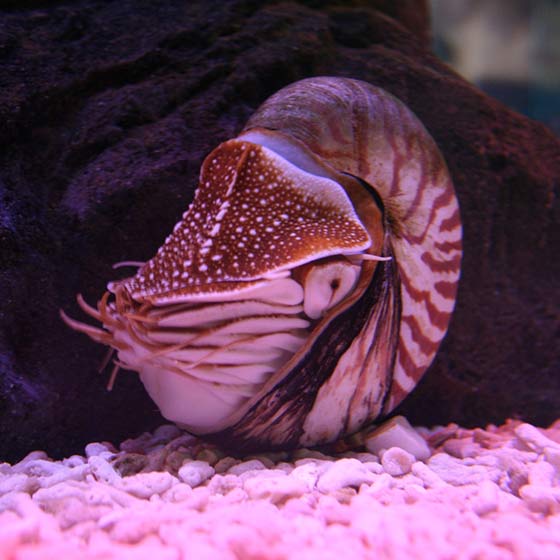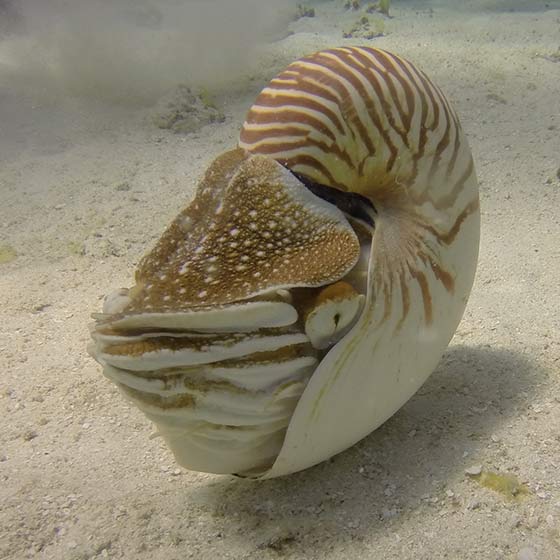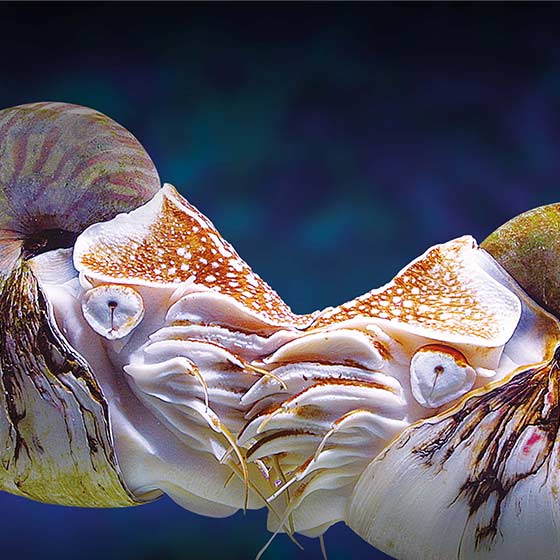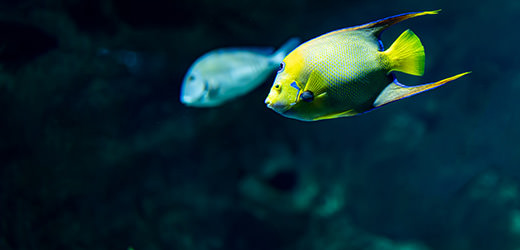Biology
The nautilus’s shell provides it with protection and acts as a flotation device.
This is because the spiral shell is compartmentalized into a series of chambers. Only the first one holds the animal’s body. The others are all filled with gas. An orifice in the middle of each compartment allows the gas to circulate in order to adjust the animal’s buoyancy.
The loss of a few grams of matter from the nautilus’s shell is sometimes enough to cause its buoyancy to increase, potentially leading to the animal’s death.
To move around, the nautilus rocks back and forth, expelling a stream of water through a sort of tube or hyponome.





